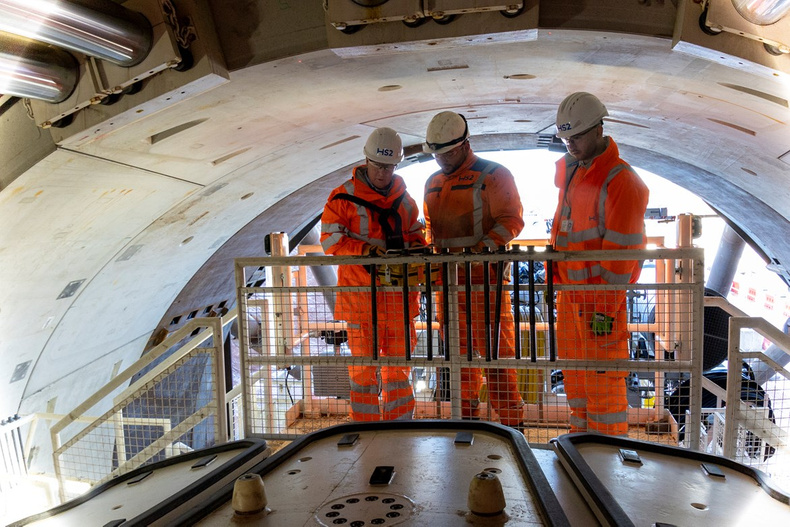HS2 launches first Midlands giant tunnelling machine

HS2 has pushed the button on its first Midlands tunnel boring machine - as it begins the one-mile journey Long Itchington Wood in Warwickshire.
Around 170 engineers have been working on the 2,000 tonne, 125m long machine - known as TBM - during its construction and assembly.
An expert tunnelling team will now work around the clock in shifts to operate the machine for around five months as it excavates the first bore of the one-mile tunnel.
This will be the first HS2 tunnel to be completed on the project, with the machine set to break through its first bore at the south portal in Spring 2022.
It will then be disassembled and taken back to the north portal to dig the second bore, which is due to be completed in early 2023.
The tunnel, which will preserve the ancient woodland above, forms a key element in how HS2 is managing environmental impacts through the design of the railway, preserving Britain 's precious wildlife habitats.
These woods are classified as a Site of Special Scientific Interest (SSSI) and have complex ecosystems that have taken hundreds of years to establish.
HS2 CEO Mark Thurston said: “Today is another major milestone for HS2. You can see the real progress the project is making as we launch this TBM on one of HS2 's largest sites in the Midlands, contributing to massive job creation in the region.
“More than 20,000 jobs and over 650 apprenticeships are already being supported by HS2, which is set to transform transport links between Britain 's major cities, free up space on the rail network for more freight and local services, and support the UK 's transition to net zero carbon emissions. ”
The machine will remove a total of 250,000 cubic metres of mudstone and soil which will be transported to the on-site slurry treatment plant where the material is separated out before being reused on embankments and landscaping along the route.
After a national vote, the TBM was named 'Dorothy ' - after Dorothy Hodgkin, who in 1964 became the first British woman to win the Nobel Prize in Chemistry.
Her discoveries included confirming the structure of penicillin, and her work with insulin paved the way for it to be used on a large scale for treatment of diabetes.
She died in 1994 in Shipston-on-Stour in Warwickshire.
The name was suggested by a student from Warwickshire College Group.
